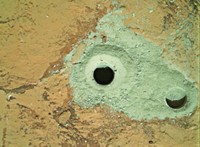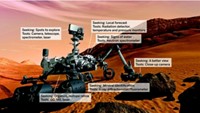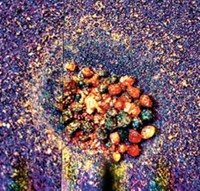Advertisement
Grab your lab coat. Let's get started
Welcome!
Welcome!
Create an account below to get 6 C&EN articles per month, receive newsletters and more - all free.
It seems this is your first time logging in online. Please enter the following information to continue.
As an ACS member you automatically get access to this site. All we need is few more details to create your reading experience.
Not you? Sign in with a different account.
Not you? Sign in with a different account.
ERROR 1
ERROR 1
ERROR 2
ERROR 2
ERROR 2
ERROR 2
ERROR 2
Password and Confirm password must match.
If you have an ACS member number, please enter it here so we can link this account to your membership. (optional)
ERROR 2
ACS values your privacy. By submitting your information, you are gaining access to C&EN and subscribing to our weekly newsletter. We use the information you provide to make your reading experience better, and we will never sell your data to third party members.
Physical Chemistry
Phoenix Tastes Water Ice On Mars
Scientists wrestle sticky soil sample into analyzer
by Elizabeth K. Wilson
August 1, 2008

The National Aeronautics & Space Administration’s Phoenix spacecraft has confirmed the presence of water ice in martian soil samples dug from the planet’s surface, mission scientists announced at a July 31 press conference.

Although NASA’s Mars Odyssey spacecraft had detected, from its orbit around Mars, water ice at the planet’s North Pole regions six years ago, this is the first time ice has been found in a soil sample.
“Now we’ve finally touched it and tasted it,” William V. Boynton, head of the team for Phoenix’s thermal and evolved-gas analyzer (TEGA), told media. “And it tastes very fine.”
After the orbiter landed on Mars on May 25, the craft’s robotic arm began digging trenches in the soil. But the task proved troublesome, as the clumpy soil tended to remain stuck on Phoenix’s robotic scoop.
Scientists finally delivered a sample of the soil to one of eight ovens on the craft on July 30. They then heated the sample and monitored the temperature at which icy-looking components melted.
“The fact that it melted at 0 °C leaves very little doubt that it is water,” Boynton said.
Scientists will spend the next few weeks heating the sample several more times and looking at the composition of any evolved gas from the sample with a tiny mass spectrometer.
Phoenix also carries four wet chemistry beakers that contain premeasured reagents that mission scientists hope to use to detect whether ions, such as nitrate and chloride, or metals, such as lead and copper, are present in the soil. Phoenix has already deposited a sample into one of the beakers (C&EN, June 27). Scientists are still examining this sample, Peter H. Smith of the University of Arizona and the principal investigator for the Phoenix mission, said at the conference.
Because the mission is proving fruitful, NASA officials also announced they will extend it for an additional five weeks, until the end of September.
“We don’t know how long the spacecraft is going to last,” Mark T. Lemmon of Texas A&M University and lead scientist for Phoenix's Surface Stereo Imager camera said at the press conference. “But it’s looking very healthy right now.”





Join the conversation
Contact the reporter
Submit a Letter to the Editor for publication
Engage with us on Twitter